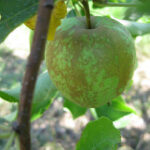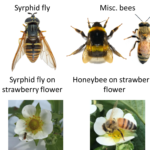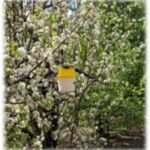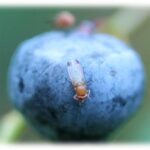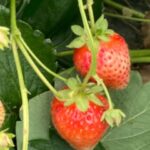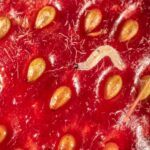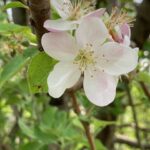Crop Management
Crop loss in 2020 and 2021 led many growers to greatly reducing their fungicide applications, or use just captan or mancozeb, which, although effective against scab, are not effective against powdery mildew. Coupled with our unusually dry weather, this has led to a build-up of powdery mildew (PM) inoculum, and continued management issues surrounding this[Read More…]
Insects provide an important pollination service in many crops including strawberry. Although strawberry flowers can self-pollinate without insects, it is well known that supplemental pollination by insects can result in better formed and larger fruit. Therefore, pollination services in strawberry affects both quantity (berry size) and quality (berry shape) of yield. By evaluating strawberry fruit[Read More…]
I hope the growing season is going well for all fruit producers! My team and several grower collaborators (thank you!) have been monitoring fruit insect pests this season in apple and blueberry, including codling moth, spotted-wing drosophila, and brown marmorated stink bugs. So, for this issue of Facts for Fancy Fruit I thought I would[Read More…]
For those growing delicious small fruits, including cherries, raspberries, blackberries, blueberries, and strawberries, on a U-pick farm or even your backyard, now is the time to be on the lookout for spotted-wing drosophila (SWD), especially if your berries are ripe or in the ripening stage. Most of you are likely familiar with SWD (Figure 1),[Read More…]
Dacthal® flowable herbicide is currently produced by AMVAC Chemical Corporation and registered for use in numerous vegetable crops (Midwest Vegetable Production Guide (mwveguide.org)) and strawberry. It provides pre-emergence control of small-seed broadleaf weeds and grasses. Dacthal herbicide contains the active ingredient DCPA. On April 28, 2022 the United States Environmental Protection Agency issued a notice[Read More…]
In the strawberry benchtop system in the greenhouses at Southwest Purdue Ag Center (SWPAC), we have been experiencing infestations in red berries of a small, clear larvae with a black head capsule. The larvae are often found in clusters on a single fruit and were difficult for us to identify. We encountered them in early[Read More…]
Indiana seems to experience the entirety of US weather, sometimes in the same day. The recent spate of cool, wet weather has left apple scab one happy fungus (Fig. 1). Most of the state just underwent an extreme scab period, and unfortunately, few of us could do anything about it because of the combination of[Read More…]

